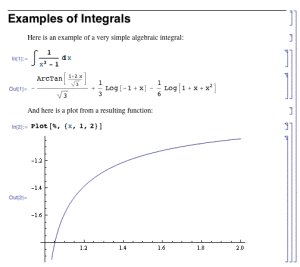

It follows an object oriented paradigm, and has a set of basic algebra functionality, as shown in this screen shot:

It's great for visualization and has typesetting capabilities similar to $\LaTeX$. But in that field, it does extremely well for a piece of free software: It's only an alternative to Mathematica in a narrow range of applications in mathematics education. When Maple was mentioned as an alternative, that reminded me of another program that's sort of an alternative to Maple, especially for anything up to high-school level.

GAP has advantage because CAG algos will need interaction with group and ring theory which it has already achieved. They are also willing to step in on working with "Computational Algebraic Geometry algorithms in which again Mathematica is a beginner. If you don't have idea I would say that simple algorithms to find subgroups of any group result in out of memory problem(with 4gb) with group of order 6 and with GAP's highly optimized approach you can calculate for order of 10,000. While GAP is so mature that it provides almost all the functionalities that is in Group theory of advanced level.It has been used to study groups of order of 10,000 and beyond. If you are interested in group theory than you need to have "GAP" and "Magnus".These are open source and way beyond the functionality that Mathematica supports at this time.Ĭomparing more precisely with respect to group theory, Mathematica is like a starter in group theory though it supports all tools upon which you can build your Computational Group Theory algorithm implementations.


 0 kommentar(er)
0 kommentar(er)
